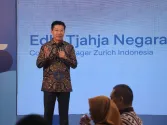
APAC's 5G rollout unhindered by licence validity
Firms face varied 5G licence terms, but affordability keeps their motivation high.
In the Asia Pacific, where companies are quick to embrace new mobile technologies, the inconsistency in private network licence durations raises questions. Yet, a report suggests that the lure of 5G remains strong, driven primarily by the affordability of these licences.
According to US tech firm, Verizon Business, the APAC region is one of the most active for private 5G due to proactive initiatives by several governments. However, each country has its unique licensing validity for private 5G networks.
For instance, in India, licences are valid until 10 years. In Australia, the licences are valid for half a decade.
Cost considerations
Despite the variations of licencing validity, the report showed that a short span of validity will likely not deter companies from “building proofs of concept or rolling out the technology” because of the affordability of licences.
In Australia, businesses are interested in establishing their own private 5G networks. However, there are limitations due to the availability of the airwaves (spectrum) that these networks need.
A good development is that the Australian Communications and Media Authority (ACMA) is working to ease the spectrum access they need for businesses. They are also discussing with network operators and organisations to help with this.
All over Australia, certain radio waves known as millimetre-wave (mmWave) spectrum in the n258 band are now accessible for businesses to use in creating their private 5G networks. The ACMA is also planning to release more spectrum in the mid-band range (3.4–4.0 GHz), which will support various applications of the technology and increase device compatibility.
The process of releasing this mid-band spectrum is expected to start in rural parts of Australia in the second quarter of 2023, and it should reach cities and towns in the first quarter of 2024. Until then, private businesses can get temporary permission for testing and experimentation.
There are also two types of temporary authorisation types including a scientific licence, which is over one-year validity, and a trial certificate which has six-month validity. A scientific licence allows the licencee to research, teach, demonstrate, or trial a new technology or product. Meanwhile, a trial certificate allows testing of new networks or services for feasibility feasible— effectively a temporary carrier licence.
Another 5G adoption example is Japan’s Fujitsu. The company declared that it had received approval to operate Japan’s first private 5G radio licence from the Kanto Bureau of Telecommunications. This leveraged Japan to become one of the first countries to make spectrum specifically available for private 5G.
In Japan, a formal regulatory framework for private 5G is needed more than in other countries. For example, firms need a radio licence even to conduct a pilot to reduce the risk of network interference.
Another fast adopter of 5G tech is The Lion City. Singapore has covered two-thirds of its territory with 5G connectivity. It aims to reach full 5G coverage by 2025.
Despite this progress, no spectrum has been allocated for enterprises to build private networks. Another way to do this is to build a pseudo-private network, using spectrum leased from one of the local MNOs.
Unlike Japan, economies such as Singapore and India have taken an operator-led approach to putting up private 5G networks. Instead of dedicating spectrum to private networks, they expect firms to work with MNOs.
South Korea initially enforced an operator-led approach but it is looking at setting aside the spectrum. The South Korean government declared that it will speed up the country’s private 5G ecosystem, it will allow non-telecom operators to build and operate 5G networks using 4.7 GHz and 28 GHz spectrum.
Government role
The government can also do more to support 5G coverage such as offering grants, running communication programmes to inform businesses about the technology, or setting up bodies dedicated to driving innovation.
An example of this is the Digital Catapult, a UK organisation that launches many programmes, and the Japanese government’s incentives and tax breaks for companies that would begin 5G projects.
The most active in supporting 5G is the German government, which has invested billions in “Industrie 4.0” over the past two decades.
Governments can also identify how easy, or difficult, to make the process of applying for spectrum. The Conseil National de l’industrie said the cumbersome application process is a key reason why France was lagging in private 5G adoption.
“Since streamlining its application processes and investing in promoting 5G, France has seen a huge increase in the volume of applications for private 5G licences,” read the report.
5G issues
In a separate report, 5G implementation also has challenges even in a digitalised country like Singapore. Ericsson’s Mobility report found that
Some of the main challenges were line-of-sight obstruction, signal attenuation from high buildings, limited space, high-density areas, and increasing prices from deploying 5G infrastructure in high-rise buildings.
To resolve this, Singtel must use sound radio planning designs and the use of available 5G spectrum bands to ensure optimal coverage and efficient handling of different use cases and traffic demands.
Network technologies like slicing, radio resource partitioning, and quality of service features are also necessary.
An example of network tech is Singtel's network slicing in a live 5G SA network during the Singapore GP and World Cup football tournament.
India’s leadership
The Ericsson study also cited the Indian market as leading in a huge 5G network deployment under its Digital India initiative. Subscriptions on 5G in India reached about 10 million by the end of 2022 and are seen to account for about 57% of mobile subscriptions in the market by the end of 2028. This makes it the fastest-growing 5G region worldwide.
There was also continued earnings growth in leading 5G markets, read the report.
Fredrik Jejdling, Executive Vice President and Head of Networks, at Ericsson, said the “global adoption of 5G technology has surpassed one billion subscriptions, bringing positive revenue growth for CSPs in leading 5G markets.”
“We see a strong link between the increase in 5G subscriptions and service revenue. Over the past two years, the introduction of 5G services in the top twenty markets has resulted in a 7% revenue boost. This trend shows the growing value of 5G, benefiting users and service providers alike,” he added.
Worldwide, around 240 CSPs have launched commercial 5G services, and about 35 have
deployed or launched 5G standalone. The most common 5G services launched by
service providers for consumers are enhanced mobile broadband, Fixed Wireless
Access (FWA), gaming, and some AR/VR-based services, such as training and education.
5G interest across industries
Analytics firm, GlobalData, showed that the manufacturing industry accounted for over a third of 5G and private network deployments as of mid-2022.
Manufacturers are out in front because they have been using private networks to gather real-time data on the condition of equipment, production processes, and more for decades, read the Verizon report.
“Technologies like supervisory control and data acquisition are decades old and many manufacturers are familiar with how to use the data,” it added.
Mobile subscriptions
The Ericsson report showed that mobile subscriptions will reach 1.5 billion this year as service providers continue to put up 5G networks despite uncertain market conditions.
All over the world, about 240 service providers launched commercial 5G services and around 35 have deployed 5G standalone.
There is also strong strong subscription growth in North America after recording the highest subscriptions for 5G in the region.
The Ericsson report also projected that as 4G subscriptions increase, they will decline eventually by the end of 2028 as subscribers will shift to 5G.
Meanwhile, 3G subscriptions also went down 85 million, with GSM/EDGE-only subscriptions dropping 59 million subscribers. In some countries, 3G will also be obsolete, with some telco firms in Singapore informing their subscribers that they will stop 3G services starting in July 2023.
Report findings also showed that China, Bangladesh, and Nigeria produced the greatest net additions of subscriptions during the quarter, with 4 million more in each market.
In North East Asia the penetration was 30%, followed by the Gulf Cooperation Council countries at 18% and Western Europe at 13%.
In five years, it is projected that North America will generate the highest 5G penetration at 91%, followed by Western Europe at 88%.
“The global 5G subscription forecast has been adjusted to take into account delayed spectrum auctions in several countries and continued difficult macroeconomic conditions,” read the Ericsson report.
5G subscriptions are expected to reach 4.6 billion globally by the end of 2028, making up more than 50% of all mobile subscriptions.
Also, 5G will become the dominant mobile access technology by subscriptions in 2028.
Weak smartphone sales
The smartphone market, however, experienced a double-digit decline in the fourth quarter of 2022 and its trend continued into the first quarter of 2023, with a 13% year-on-year drop in shipments worldwide, read the Ericsson report.
Even if the weak smartphone market persists, the adoption of the 5G network is still strong. With over 870 5G smartphone models launched and more than 80 introduced in 2023, 5G smartphones are forecasted to be composed of 62% of all smartphones shipped in 2023.
The foldable devices market went up by 26% in 2022 but only accounts for 1% of the overall smartphone market.
User equipment route selection policy has been introduced on laptops running Windows 11, allowing devices to automatically select network slices based on the application in use. RedCap.














